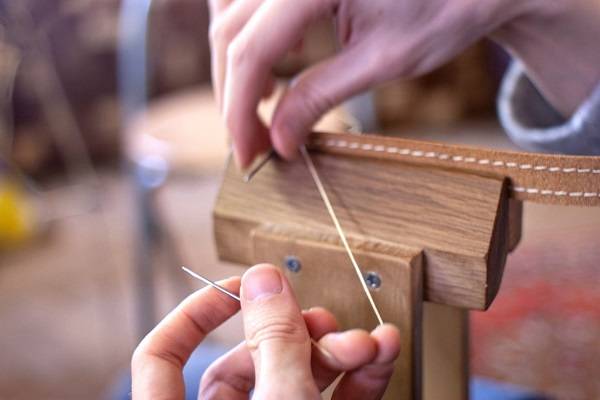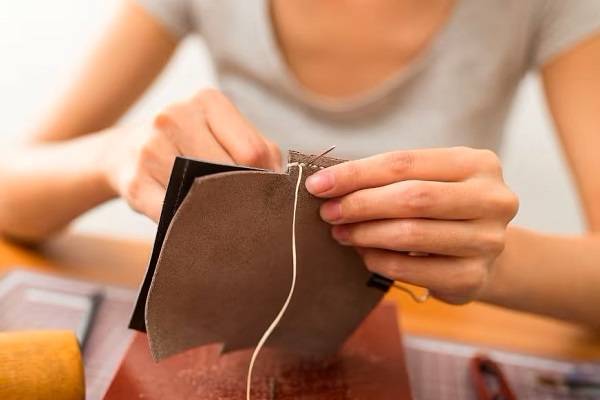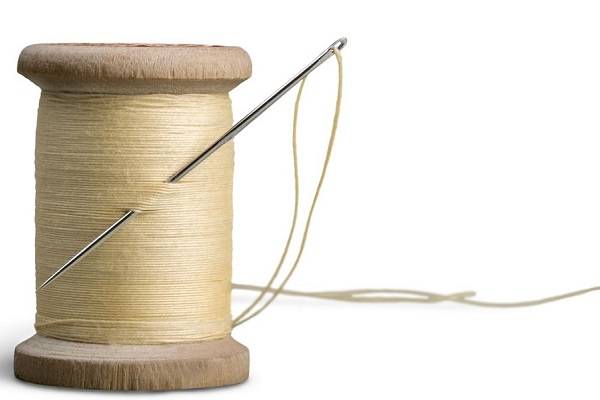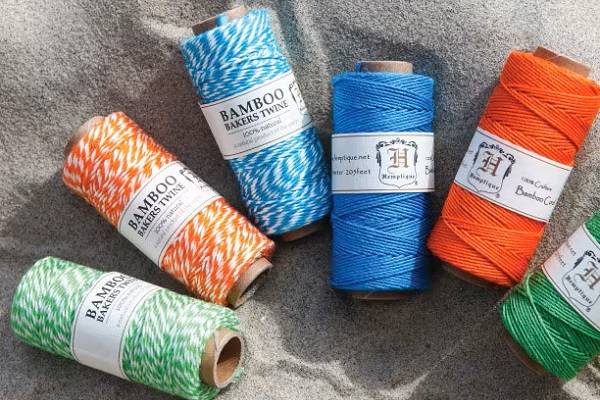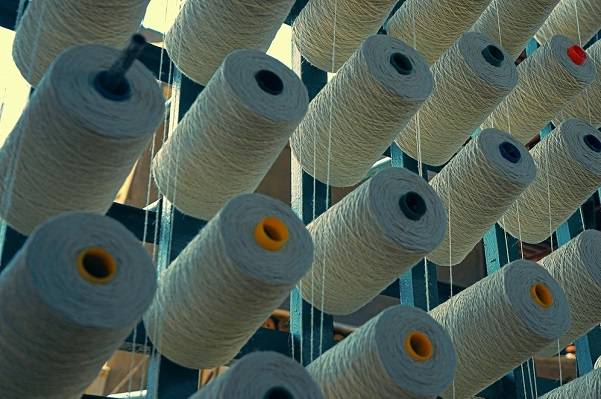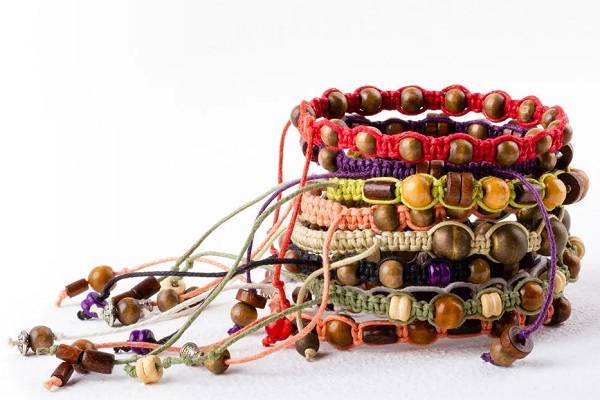As a man-made product, it does not shrink or fade unless exposed to extreme conditions (extreme heat or sunlight). It’s safest to use cold or lukewarm machine cycle when washing.
Polyester Thread Applications: Discover Various Types & Multifaceted Uses of This Diverse Fiber
A Brief Guide On How To Use & How To Choose The Right Type Of Strand For Your Project

Innovation & Quality
Developing and supplying premium-quality, sustainably grown, consumer products
100% Natural
Organically Grown and Ethically Sourced
hemp and other natural fiber products
Shipping
We offer fast shipping
Your order out within 1-3 days
Wholesale
Visit our wholesale portal to register or login to your account
With a wide range of different threads available on the market it can be difficult to find just the right thread for your task, particularly if you are a beginner who is relatively new to stitching or sewing. By understanding the thread's main characteristics and the project's requirements, you will be able to decide which type of thread will perfectly suit your needs.
Shop Polyester Thread at Hemptique. Wholesale & Bulk Ordering Available.
For over two decades, Hemptique has served retail and commercial customers by offering top-quality arts and crafts supplies. Our newest collection includes first-class waxed poly thread that can be utilized for a wide range of projects, including bookbinding, leather stitching, jewelry making, beading, upholstering, crocheting, embroidery, and so much more. Exceptionally strong, durable, resistant to sun exposure and moisture, our waxed poly threads are also suitable for outdoor, marine, and heavy-duty use. Our assortment includes braided & flat waxed thread, waxed bonded & round thread, and silky smooth waxed thread. Call us at (760) 602-4864, ext. 403 and 405, for help buying the right thread for your needs, or fill out the form to order in bulk or to register for a wholesale account.
What Is Polyester Thread?
Polyester thread is made from petroleum-based synthetic material which is melted, cooled, and finally spun into threads. It looks, feels, and sews like nylon, but it is more resistant to mold, mildew and sunlight.
Types Of Poly Threads
The varieties of polyester strands which are widely available on the market include:
Spun polyester
Spun polyester is manufactured by twisting and spinning fibers of various lengths. Its production, looks, and feel are similar to cotton's, although it has more elasticity and is more economical to produce. This type is widely known as a general-purpose thread.
Bonded polyester
Unique resin coating increases strength and reduces friction while stitching, which is why this type of strand is commonly used for outdoor furnishings and automotive upholstery.
Filament polyester
This category includes two subcategories: monofilament and multifilament. Monofilament is typically constructed as a single (mono) thread, while multifilament consists of several individual fibers twisted together and represents the largest category of filament polyester strands.
Corespun polyester
This type of string, also known as “P/P”, “polycore”, or “Poly-core spun-poly”, is made by wrapping spun polyester around filament core. This core contributes to increased strength and higher tenacity, better uniformity, and superior resistance to abrasion. Its exceptional durability combined with a matte finish makes it the preferred choice for quilting.
Trilobal polyester
Trilobal polyester is multiple filament, twisted fiber of triangular shape and superior luster. Its flat sides reflect more light than round strings, giving finished products an appealing shine. Use trilobal polyester to add a pop of shine to your quilting, embroidery, applique, or stitching.
A Look At Poly Thread’s Diverse Uses
Poly string is one of the most sought-after threads for crafters, artisans, hobbyists and manufacturers whose goal is to create high-quality items. Due to their impressive strength, longevity, and resistance to environmental influences, they are widely used in a wide range of applications:

1. Fashion and apparel
Use: Sewing and embroidery
Poly strand is widely used in apparel industry due to its durability, strength and a vast array of color choices. It is very resistant to frequent washing, UV lights, and moisture.
2. Crafts and DIY projects
Use: Quilting, jewelry making, beading
Poly threads are one of the favorite choices for hobbyists and artists who work on quilting or jewelry-making projects due to their reliability, flexibility, and versatility. Offered in many different weights, sizes, and colors, they allow for the most creative and unique artistic expressions from fine work and detailed designs to more robust projects. Smooth surface allows easier fiber management.
3. Leather work
Use: Stitching and sewing leather
Because it is strong, resistant to fraying, and withstands heavy use, polyester is perfect for all kinds of leather work.
4. Home Textiles
Use: Upholstery, Curtains, and Bedding
Polyester is popular supply for home furnishings making and repair, including upholstery, bedding, draperies, curtains, and other home décor textiles.
5. Outdoor gear & equipment manufacturing & repair
Use: Camping gear, Sports equipment
Due to its high resistance to mold, mildew, and abrasion and the ability to maintain its strength even in harsh weather, poly thread is suitable for heavy-duty applications.
6. Marine fabrics sewing, restoration, & repair
Use: Sail, boat cover, marine textile and canvas repair & manufacturing
Excellent resistance to sun exposure, UV rays and saltwater makes it perfect for work on all kinds of marine upholstery fabrics, including sailcloth, boat canvas covers, berth covers, marine cushions, draperies, sunshades, blinds, and so on.
7. Automotive industry
Use: Automotive upholstery and safety belts
In automotive manufacturing, where safety and durability are of utmost importance, poly string is used due to its exceptionally high tensile strength and resistance to UV light.
8. Industrial Sewing
Use: Conveyor belts and heavy-duty sewing
Poly thread is used for sewing heavy fabrics, canvases, and fabrics using industrial sewing machines that mas produce items at high speeds.
How To Choose The Right Type Of String For Your Needs
If you are planning a DIY craft project and need to pick the ideal string for sewing or stitching, you should consider project requirements, major characteristics of the fiber, needle size, stitch appearance, your budget, and other important factors.
- your project calls for durability and strength
- you are working on outdoor items (outdoor furniture, camping gear, sport equipment)
- the final product will be exposed to harsh weather conditions or heavy-duty use
- the craft requires water resistance, low stretching, and great color retention qualities
- you are working with leather or marine textiles
Commonly Asked Questions
1. Does polyester thread shrink?
2. Can poly thread be used to make potholders?
Polyester thread is not heat resistant. If you want to use it for potholders, make sure you choose a high-quality string designed to withstand high temperatures.
3. Is poly thread good for quilting?
Yes! Polyester strand is ideal for quilting because it does not fray, it’s smooth and has excellent color retention properties.
4. Can polyester embroidery thread be used for regular sewing projects?
Yes, you can use it for regular sewing, however, be aware that this type of thread is finer and thinner than standard sewing ones.
5. Can poly string be used for machine quilting?
Certainly! It is strong enough to endure increased tension in high-speed machine quilting, with smooth and consistent throughout the quilt.


